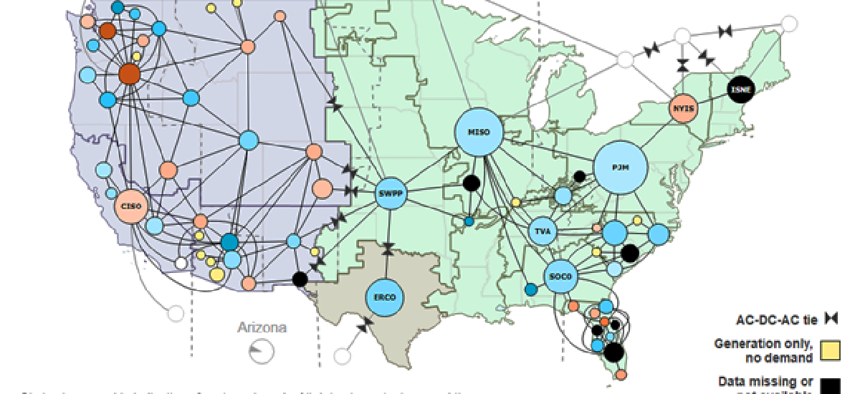Getting the big picture on critical infrastructure


Connecting state and local government leaders
Energy Information Administration's U.S. Electric System Operating Data tool lets officials to see when electricity spikes and lulls occur so they can adjust time-of-use electricity rates.
The Energy Information Administration’s U.S. Electric System Operating Data tool provides a single view of the country’s entire electrical grid and enables electricity providers and policymakers to make more informed decisions about how the system is operated.
Launched in July 2016, the tool automatically collects data using XML files from 67 balancing authorities, which exchange electricity with one another, every 60 seconds. The tool is based on the jQuery JavaScript library, and Google’s Angular framework powers user controls and visualizations.
“A lot of this information has not been made public, so this is actually the first chance for everyone to see publicly what is actually [happening] on each electric system,” said April Lee, senior electricity analyst and data visualization specialist at EIA. “That means their demands and how much power they’re generating in each system, as well as how much electric flows are going between system to system.”
Steve Luminati, lead web project manager at EIA, said there are three aspects to the tool. One is data collection, based on the authorities’ reports about their demand expectations and how much power they anticipate generating. The second part involves analyzing the data using algorithms that Lee’s team wrote to determine whether the data looks good.
For example, if the balancing authority serving California said it has negative power generation, that’s probably wrong, and the algorithm can fill the grid with more accurate information based on the region’s historical electricity usage.
The final element is assembling the data and creating graphics.
“The goal is a more reliable electricity grid,” Luminati said.
Currently in public beta mode, the tool enables officials to see when electricity spikes and lulls occur so they can adjust time-of-use electricity rates. For instance, demand is higher during weekdays when office buildings need power, and different regions have different seasonal demands. During the summer, demand is highest in the afternoon when it’s hottest, while spikes occur in the morning during the winter as people wake up to cold homes and offices.
“You don’t you really get a sense of the need on the system if you don’t have the data that shows that level of granularity,” Lee said.





